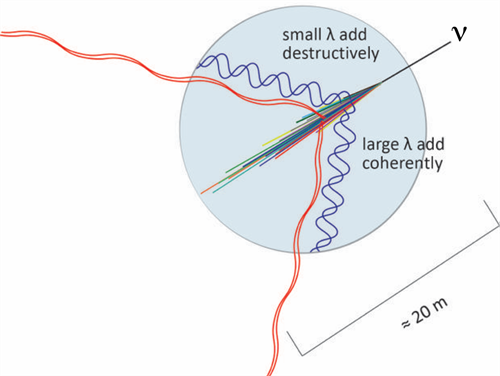5.26.17 | WIPAC News | Sílvia Bravo | Original Publication
Kael Hanson, WIPAC director and a professor of physics at UW–Madison, has been awarded a UW2020: WARF Discovery Initiative grant to explore the potential of the Askaryan radio detection method in the future upgrade of the IceCube Neutrino Observatory, the so-called IceCube-Gen2 facility.

High-energy neutrinos are a big deal for WIPAC scientists and staff. Under Hanson’s supervision, over sixty scientists and technicians work on the maintenance and operations activities of the IceCube Neutrino Observatory, a cubic-kilometer detector at the South Pole, including data taking and management. A smaller group of faculty, researchers, and students also works on data analysis and has produced outstanding IceCube results, including the discovery of astrophysical neutrinos. This team includes IceCube principal investigator Francis Halzen and IceCube associate director for science and instrumentation Albrecht Karle. Halzen and Karle are also professors of physics at UW–Madison.
IceCube detects high-energy neutrinos by recording the bluish light, also called Cherenkov light, produced when neutrinos interact in the ice and emit showers of charged secondary particles. IceCube has instrumented a huge volume of ice to capture these rare neutrino events, whose flux decreases drastically with energy. As a result, IceCube’s sensitivity to neutrinos above 10 PeV is very limited.
Consequently, the WIPAC team in conjunction with the worldwide IceCube-Gen2 Collaboration, is boosting efforts on IceCube-Gen2. The new facility will include a larger optical Cherenkov detector array, similar to the current in-ice detector, and will also feature other detectors to improve and broaden the science scope.
One of the new approaches is to use radio waves to detect the nanosecond radiofrequency transient impulses produced by a neutrino interaction in ice. Because radio waves can travel much longer distances in the ice than photons, this technique is between 10 and 100 times less expensive than the optical Cherenkov technique for the detection of neutrinos above 100 PeV.
In this new project funded by the UW2020: WARF Discovery Initiative, titled “Radio Neutrino Detection Using Scalable Technologies to Lower Energy Thresholds,” Hanson wants to explore leveraging radio detection advances from industry, namely from the cell phone sector, to extend the sensitivity of the Askaryan technique to bridge the gap with optical detection. The thrust of the research is to develop inexpensive radio detectors that can be deployed in large quantities as part of the IceCube-Gen2 upgrade. The team is co-led by Albrecht Karle, who is also the principal investigator of the Askaryan Radio Array (ARA), a neutrino radio-detector currently under construction at the South Pole. WIPAC scientists Mike DuVernois and John Kelley, and Thomas Meures, an engineer also at WIPAC, are the other main contributors to this project.

A hybrid Cherenkov-Askaryan facility can provide a larger and yet more economical array to both increase the detection of neutrinos with energies between 100 TeV and 10 PeV and at the same time enable the detection of ultra-high-energy neutrinos, i.e., with energies around 100 PeV and above. Such a detector will transform the field of neutrino astronomy from its early detections into a mature discipline.
The goal of UW2020 is to stimulate and support highly innovative and groundbreaking research at the University of Wisconsin–Madison over a period of 5 years, from 2015 to 2020. This initiative seeks to fund research projects that have the potential to fundamentally transform a field of study as well as projects that require significant development prior to the submission of applications for external funding.